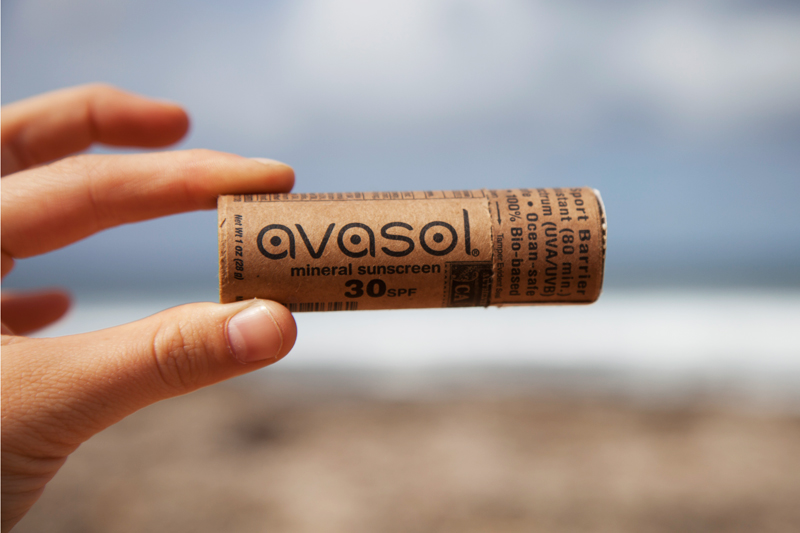4 Ways to Help Protect the Ocean at the Beach This Summer
Published by Ocean Conservancy
Summer has finally arrived, and millions across the country are starting to hit the beaches. It’s no secret that if you’re excited about visiting the beach, you probably love the ocean…but do you know the best methods for keeping the ocean safe while you’re enjoying it? Check out these four top tips for helping preserve our marvelous marine ecosystems while enjoying all they bring us this summer.
Say no to single-use, and yes to reusable.


We all know the drill here: go reusable! This may sound like a record on repeat, but that’s because it’s one of the easiest and most effective ways to start decreasing your plastic footprint and subsequent impact on the environment around you. When you’re headed to the beach, bring a large reusable glass, stainless steel bottle or mug to enjoy beverages out of. While it may be tempting to buy a 12-pack of plastic water bottles if you’re trying to hydrate a large group, not to worry; there are ways around that, too! Try bringing a reusable, multi-gallon water cooler filled with ice for your beach trip, and have each member of your group bring along their own cup. Rather than bringing food or snacks in single-use bags and boxes, prep your snacks ahead of time in some affordable travel containers (bonus: this is less messy than grabbing packaged items from the gas station down the street). Finally, invest in a good bag for the beach—and hey, when I say invest, it doesn’t have to be expensive! Whether it’s a canvas beach bag or foldable tote, there are tons of affordable options out there to help you ditch single-use and start loving a less wasteful lifestyle.
Keep your skin and corals protected with reef-safe sunscreen.


Your sunscreen might have the word ‘natural’ printed across its label in fancy script lettering, but that doesn’t necessarily mean it’s truly nature-friendly. Studies have found that many popular sunscreens contain chemicals called oxybenzone and octinoxate, compounds that are used for their ability to convert UV rays to harmless heat on our skin. However, once these chemicals enter the water by way of rinsing off our skin and into the sea, they damage coral DNA, hindering their development. To avoid contributing to this problem, opt to reef-safe sunscreens, which have increased in availability over the past year or so. It’s important to opt for mineral sunscreens, and if you can find lotions with non-nano zinc dioxide as the primary active ingredient, that’s an especially better option. Plus, avoid aerosols that leave residues on the sand (and sometimes more product on the beach than your body). Click here to see a list of some solid options for reef-safe sunscreens available for purchase.
Sign up for our emails!
Keep the ‘wild’ in wildlife: admire from a distance.


I get it: it’s totally exciting to come across animals like sea turtles, dolphins and pelicans in real life! However, as spectacular as they may be, it’s typically recommended to stay at least 100 yards away from wild animals, both for your own safety and the animals’. More than likely, you’re observing an animal that you’ve spotted from afar because you admire nature, not because you mean it any harm. The big thing to remember here: the animals don’t know that. The last thing you want to do is startle them or make them feel as though they’re in any sort of danger, so be sure to respect their space. If you encounter an animal for which you are concerned for their wellbeing or safety, contact wildlife professionals who know how to take care of the situation—and read our blog on the best steps to take during a situation like this.
Do the stingray shuffle.


Well, this one obviously only applies in certain spots on the map (looking at you, Florida), but the underlying idea can be applied to all beaches of our world. Firstly, this term refers to the recommendation that many beachgoers are given if they’re in areas that are frequented by stingrays. If guests chose to go into the water, they are encouraged to ‘shuffle’ their feet, so as to signal to any (potentially hidden) stingray in the sand that there is someone nearby (this avoids stepping on them, startling them, etc.), enabling both parties to keep a safe distance and be mindful of the other’s presence.
The idea here is simple: when we go to the beach, it’s important that we remember that we’re stepping foot into the natural environment of other species. Whether in the water or on the shoreline, we are entering into the home of animals. If someone came into my house, I’d want them to respect my home, so treating this environment as respectfully as possible by leaving as minimal a negative impact on it as possible is the least we can do.
There you have it: now you know 4 simple rules to follow when it comes to keeping our coasts healthy and safe this summer. Healthy beaches mean happy beach-goers, so don’t forget to share these tips with your friends before you hit the beach this season!
The post 4 Ways to Help Protect the Ocean at the Beach This Summer appeared first on Ocean Conservancy.
Read the full article at: https://oceanconservancy.org/blog/2019/05/25/4-ways-help-protect-ocean-beach-summer/


